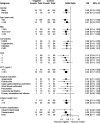Intraoperative incision irrigation with high-volume saline reduces surgical site infection for abdominal infections
- PMID: 35903254
- PMCID: PMC9314743
- DOI: 10.3389/fsurg.2022.927896
Intraoperative incision irrigation with high-volume saline reduces surgical site infection for abdominal infections
Abstract
Purpose: Surgical site infection (SSI) remains one of the most common postoperative complications for patients with abdominal infections. This study aimed at investigating the effectiveness of high-volume normal saline (NS) irrigation in preventing postoperative SSI for patients with abdominal infections.
Methods: In this retrospective before-after clinical study, patients who underwent emergency laparotomy due to abdominal infections between Jan 2015 and Dec 2021 were included consecutively. A cohort of 207 patients with NS irrigation was compared to historical controls. A propensity score matching (PSM) with a 1:1 ratio was performed to reduce potential bias. The primary outcome was the 30-day SSI rate.
Results: Irrigation (n = 207) and control (n = 207) matched patients were statistically identical on baseline characteristics, perioperative, and intraoperative parameters. Irrigation patients had lower overall SSI rates (10.6% vs. 26.1%, p < 0.001), mainly due to reduction in superficial (4.3% vs. 17.9%) and deep (1.4% vs. 3.9%) SSIs, rather than space/organ SSIs (4.8% vs. 4.3%). Irrigation patients also had lower rates of incision seroma (4.8% vs. 11.6%, p = 0.012), shorter duration of antibiotics use (5.2 ± 1.7 d vs. 7.2 ± 2.0 d, p < 0.001), and unplanned readmission (1.0% vs. 8.7%, p < 0.001). Length of hospital stay showed a declining trend with irrigation intervention, while no significant difference was observed. Moreoever, logistic regression revealed that NS irrigationwas an independent protector against SSI (OR 0.309; 95% CI, 0.207-0.462; p < 0.001).
Conclusion: Intraoperative incision irrigation with high-volume NS is associated with a lower rate of SSI for patients with abdominal infections.
Keywords: Saline irrigation; abdominal infection; high-volume; laparotomy; surgical site infection.
© 2022 Wang, Lv, Xu, Yang, Du, Zhong, Shi and Shan.
Conflict of interest statement
The authors declare that the research was conducted in the absence of any commercial or financial relationships that could be construed as a potential conflict of interest.
Figures
Similar articles
-
Comparing the Efficacy of Povidone-Iodine Versus Normal Saline in Laparotomy Wound Irrigation to Prevent Surgical Site Infections: A Meta-Analysis.Cureus. 2023 Dec 2;15(12):e49853. doi: 10.7759/cureus.49853. eCollection 2023 Dec. Cureus. 2023. PMID: 38169675 Free PMC article. Review.
-
Reducing surgical site infections after spine surgery: the optimal amount of normal saline for intra-wound irrigation.Spine J. 2023 Nov;23(11):1580-1585. doi: 10.1016/j.spinee.2023.07.011. Epub 2023 Jul 19. Spine J. 2023. PMID: 37473810
-
[Surgical site infection after abdominal surgery in China: a multicenter cross-sectional study].Zhonghua Wei Chang Wai Ke Za Zhi. 2020 Nov 25;23(11):1036-1042. doi: 10.3760/cma.j.cn.441530-20200810-00470. Zhonghua Wei Chang Wai Ke Za Zhi. 2020. PMID: 33212551 Chinese.
-
The role of saline irrigation prior to wound closure in the reduction of surgical site infection: a systematic review and meta-analysis.Patient Saf Surg. 2020 Dec 22;14(1):47. doi: 10.1186/s13037-020-00274-2. Patient Saf Surg. 2020. PMID: 33353558 Free PMC article. Review.
-
Effectiveness of Gentamicin Wound Irrigation in Preventing Surgical Site Infection During Lumbar Spine Surgery: A Retrospective Study at a Rural Teaching Hospital in India.Cureus. 2023 Sep 27;15(9):e46094. doi: 10.7759/cureus.46094. eCollection 2023 Sep. Cureus. 2023. PMID: 37900478 Free PMC article.
Cited by
-
Comparing the Efficacy of Povidone-Iodine Versus Normal Saline in Laparotomy Wound Irrigation to Prevent Surgical Site Infections: A Meta-Analysis.Cureus. 2023 Dec 2;15(12):e49853. doi: 10.7759/cureus.49853. eCollection 2023 Dec. Cureus. 2023. PMID: 38169675 Free PMC article. Review.
References
-
- Quiroga-Garza A, Valdivia-Balderas JM, Trejo-Sanchez MA, Espinosa-Uribe AG, Reyes-Hernandez CG, Elizondo-Omana RE. A prospective, randomized, controlled clinical trial to assess use of 2% lidocaine irrigation to prevent abdominal surgical site infection. Ostomy/wound manage. (2017) 63(8):12–21. 10.25270/owm.2017.08.1221 - DOI - PubMed
LinkOut - more resources
Full Text Sources
Research Materials
Miscellaneous



